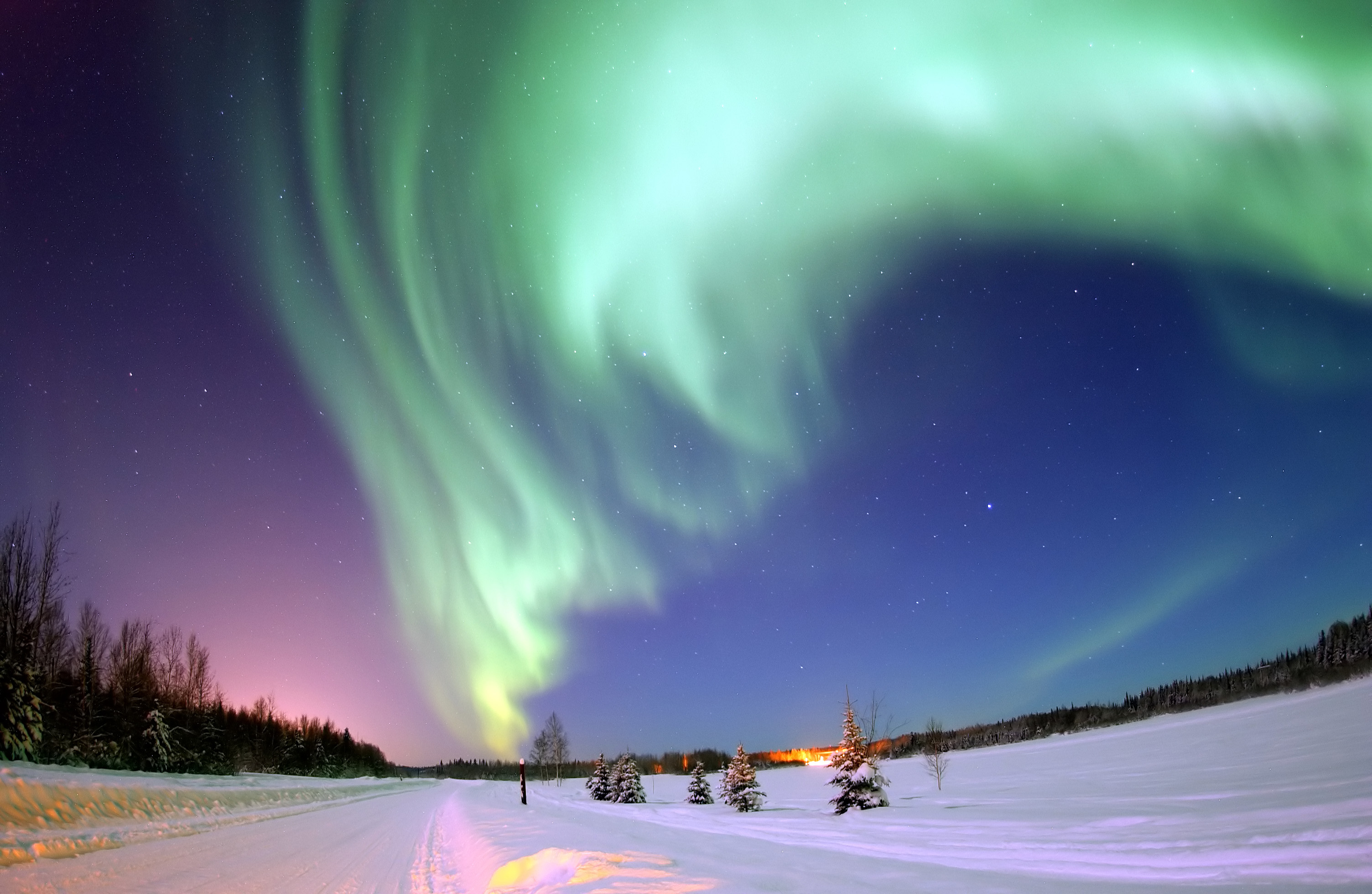
A coronal mass ejection screams toward Earth's magnetosphere.
Image courtesy of NASA.
Actually, events like this are fairly normal in our stellar neighborhood. Every eleven years or so, the sun completes a cycle of waxing and waning electromagnetic activity. During its more active phases, such furious discharges of material (coronal mass ejections, or CMEs) are common. The last peak of solar activity was in 2001. Now, nine years later, it seems that our star is once again getting ready to pull out the big guns. Between now and 2013, scientists predict that CMEs like the one that occurred last week will become more frequent. But far from signaling our imminent doom, these violent outbursts will actually treat us to a demonstration of one of nature's most amazing spectacles: the aurora.

The Aurora Borealis in Alaska. Image courtesy of Joshua Strang.
Aurorae occur when solar material is spontaneously thrown toward Earth, as in a CME. Upon reaching the magnetosphere, highly energetic solar particles are carried groundward, where they collide with and excite nitrogen and oxygen atoms in the ionosphere. The atoms cannot remain excited, so they release excess energy in the form of a photon. The amount of energy needed to excite an atom determines what color photon is emitted when it makes the transition back to its ground state - in this case, ionized oxygen emits green light while ionized nitrogen emits blue or red light. The flickering lights that spread across the sky during an aurora are simply large-scale representations of the transitions that occur when atmospheric particles are excited by the solar wind.

Atoms in the ionosphere interacting with the solar wind.
Image courtesy of NASA.
Sure enough, the CME on August 1st provided audiences across North America and Europe with spectacular visions of the lights a few days later. Although visibility is usually limited to areas surrounding the poles, some American observers this time around reported light shows as far south as Massachusetts! As solar maximum draws nigh, the after-effects of the sun's raging temper should become more and more apparent. Keep your eyes peeled. Depending on where you live, you might be glad you did.
hello vanessa, you volunteered to host scientia pro publica but never gave me your email address so i have to post a comment instead. please check the scientia pro publica schedule and email me know if this works for you. my email is grrlscientist[at]gmail
ReplyDelete